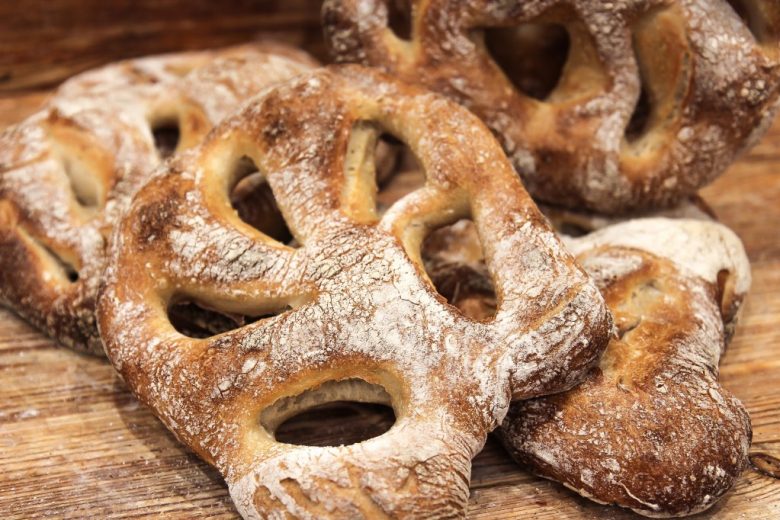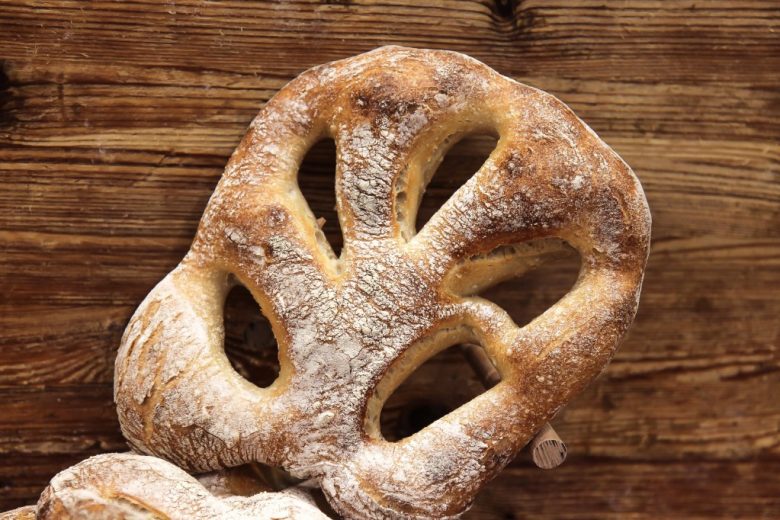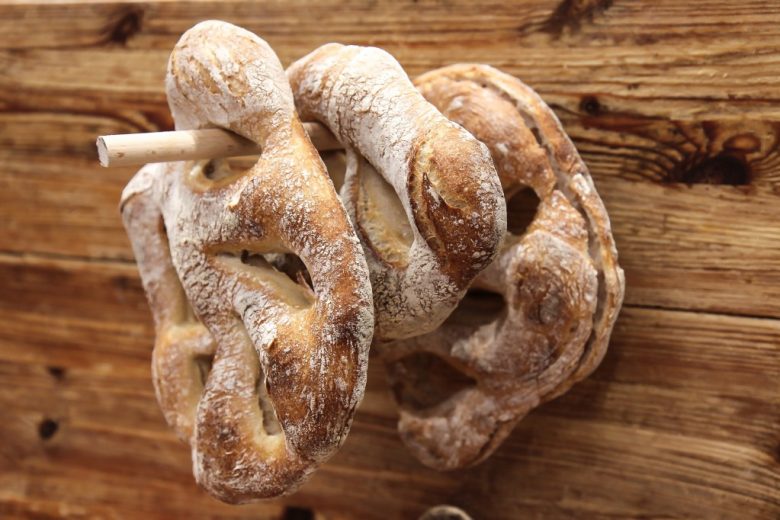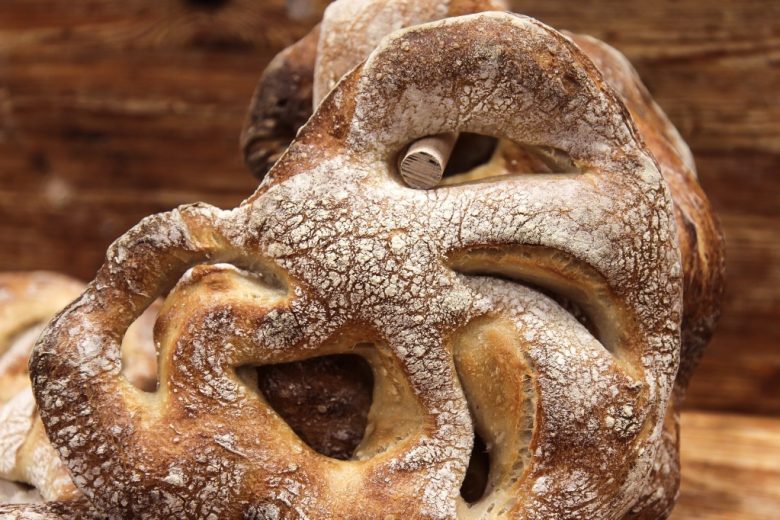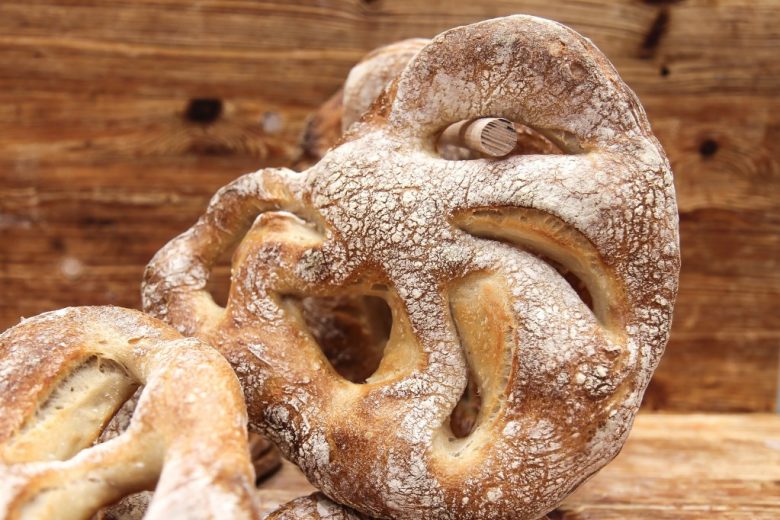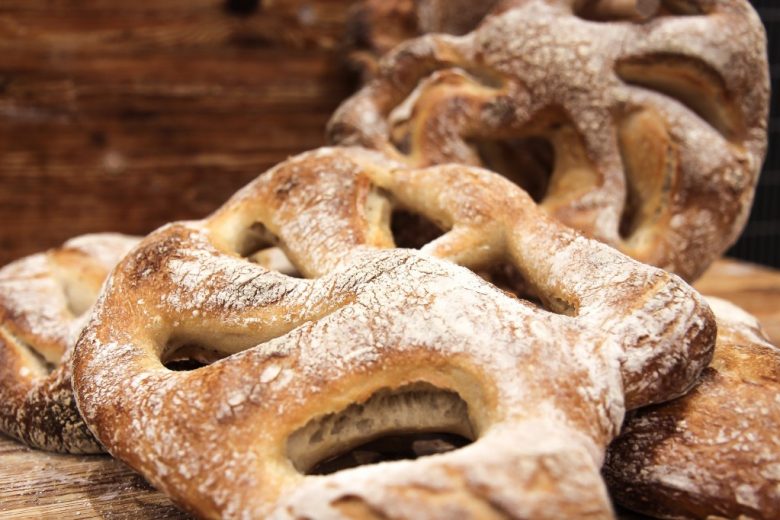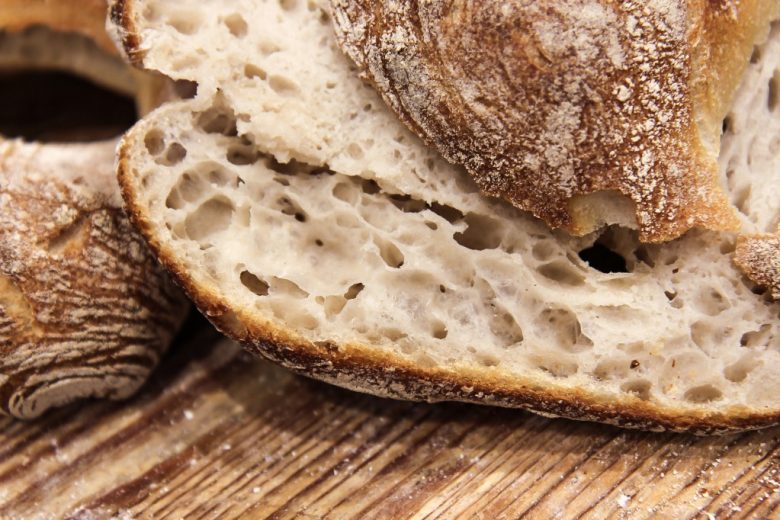Fougasse
Fougasse is an uncomplicated bread, simple to prepare and an ideal companion to appetizers, antipasti, cheese, or fine spreads.
To get an airy crumb it is important that the dough isn’t mixed up too firm. A dough that is too firm leads to a heavy crumb and the taste of the wheat sourdough does not come into its own. Therefore it is important to knead the dough soft and fully. In order to get the hydration (TA) up to 180-185%, I recommend adding part of the bulk liquid (10%) at the end of the kneading time.
Advantage of this method:
- Shorter mix and kneading time
- Better and faster dough development
- You get a better idea of when the dough is well kneaded and you don’t run the risk of over or under kneading the dough
In addition, the fougasse can be refined with olives or tomatoes. If you would like to, you can coat the fougasse with olive oil before baking and then sprinkle with dried herbs.
Recipe
For 3 fougasse, each about 300g
Recipe with yeast water:
Pre-dough:
- 150g Tipo 0
- 150g Yeast water ( See here for how to make yeast water)
Maturity time: 8 hours TT: 28°C Hydration(TA): 200
Main dough:
- 300g Pre-dough
- 350g Tipo 0
- 210g Water 20°C
Mix the ingredients and let stand for 30 minutes to autolyse.
- 11g Salt
Add the salt and mix on slow speed until the dough releases from the side of the bowl
- 40-60g Water 20°C
Once the dough has released from the side of the bowl, the dough is kneaded quickly. At this time the rest of the water is slowly added. The dough is kneaded until the water has been completely absorbed and is kneaded smooth.
Recipe with wheat sourdough:
Sourdough:
- 150g Water
- 150g Tipo 0
- 15g Starter
Maturity time: 12 hours TT: 28°C Hydration (TA): 200
Main dough:
- 315g Mature wheat sourdough
- 350g Tipo 0
- 210g Water 20°C
Mix the ingredients and let stand for 30 minutes to autolyse.
- 11g Salt
Add the salt and mix on slow speed until the dough releases from the side of the bowl
- 40-60g Water 20°C
Once the dough has released from the side of the bowl, the dough is kneaded quickly. At this time the rest of the water is slowly added. The dough is kneaded until the water has been completely absorbed and is kneaded smooth.
“If you want you can add yeast to either recipe. Yeast amount: 2-3g”
Instructions:
- After kneading the dough is placed in an oiled tub.
- Once it has increased in volume by 50% it is folded 1x.
- After the first fold the dough rises for another 40 minutes in the tub.
- Then the dough is divided into the desired sizes and is loosely “folded” into rounds!
- These mature, covered for another 45-60 minutes.
- To shape, the dough is gently stretched and then pierced with a dough spatula.
- Make sure not to de-gas the dough!
- After piercing the dough form it into the fougasse shape and place onto baking paper. Using baking paper makes it easier to slide the fully proofed fougasse into the oven.
- The fougasse is baked at 250°C with steam.
- Reduce the oven to 220°C after 12 minutes and bake until well browned (baking time of about 30 minutes).


